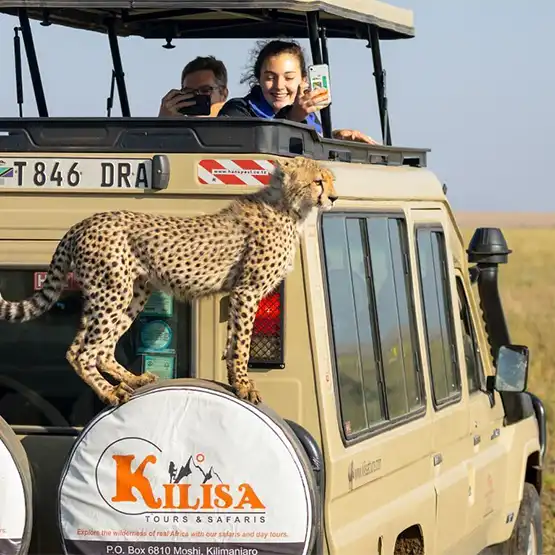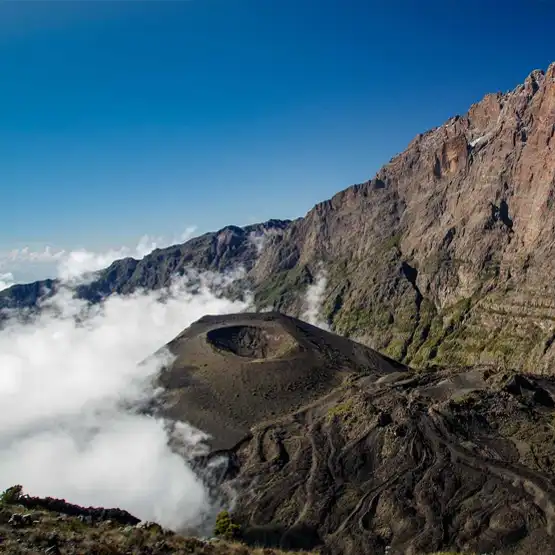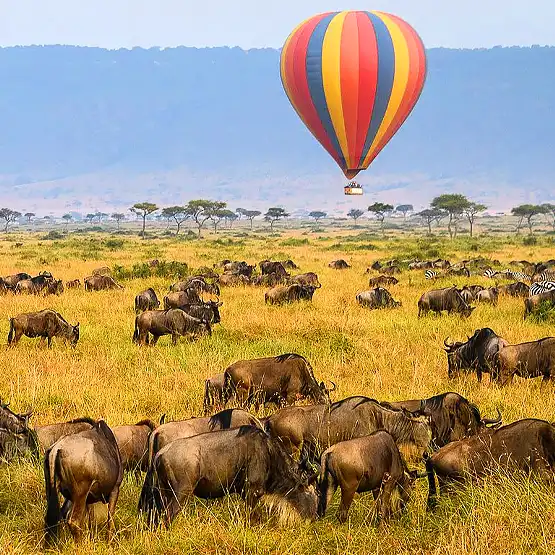Sustainable Trekking Kilimanjaro 2025
Mount Kilimanjaro, one of the world’s most iconic trekking destinations, is now embracing a new era of sustainable tourism. As environmental concerns grow and the impact of tourism on delicate ecosystems becomes more evident, Tanzania is taking proactive steps to ensure that the mountain’s natural beauty is preserved for future generations. The introduction of new eco-friendly hiking routes on Kilimanjaro marks a significant shift toward responsible tourism, balancing adventure with environmental stewardship. In this article, we’ll explore the newly launched eco-friendly hiking routes on Kilimanjaro and how these initiatives are helping protect the mountain’s unique ecosystems.
Why Eco-Friendly Hiking Routes on Kilimanjaro Matter
Kilimanjaro, with its towering peak and diverse landscapes, attracts thousands of trekkers from around the world each year. However, the increase in trekking activity has put a strain on the environment, leading to concerns about waste management, pollution, and the preservation of local wildlife. Eco-friendly hiking routes are designed to minimize these impacts by promoting sustainable practices and reducing the environmental footprint of trekkers.
Key reasons why eco-friendly hiking routes are vital for Kilimanjaro include:
-
Preserving ecosystems: Kilimanjaro’s ecosystems are delicate and need protection from human activity to maintain their biodiversity.
-
Waste reduction: Eco-friendly routes implement waste management systems that encourage trekkers to pack out their trash and dispose of waste responsibly.
-
Protecting wildlife: New routes are designed to minimize disturbance to Kilimanjaro’s unique wildlife and natural habitats.
-
Promoting responsible tourism: Eco-friendly routes encourage sustainable practices, such as respecting local communities and supporting conservation efforts.
The New Eco-Friendly Hiking Routes on Kilimanjaro
Tanzania National Parks (TANAPA) has introduced several new eco-friendly hiking routes designed to reduce the environmental impact of trekking on Mount Kilimanjaro. These routes are part of a broader effort to promote sustainable tourism on the mountain and enhance the overall experience for trekkers while preserving the integrity of the natural environment.
1. The Green Route: A Low-Impact Trail
The Green Route is the newest addition to Kilimanjaro’s hiking network, and it focuses heavily on minimizing environmental impact. This route is designed to be low-impact, meaning it has been carefully planned to ensure minimal disruption to the natural surroundings.
-
Why it’s eco-friendly: The Green Route is built to minimize soil erosion and avoid unnecessary deforestation. The route also includes eco-friendly campsites with composting toilets, waste disposal systems, and solar-powered lighting, ensuring that trekkers have a sustainable and responsible trekking experience.
-
Environmental benefits: This route avoids overcrowded areas and prioritizes the preservation of local ecosystems by keeping the trail as natural as possible. Trekkers are also encouraged to follow the principles of “leave no trace” and to carry out all their waste.
-
Highlights: The Green Route offers trekkers the opportunity to enjoy some of Kilimanjaro’s most stunning landscapes while minimizing their environmental impact. The route winds through lush forests, alpine meadows, and high-altitude desert areas, providing panoramic views of the mountain and surrounding regions.
2. The Eco-Camp Route: Sustainable Accommodations Along the Way
The Eco-Camp Route combines the thrill of trekking Kilimanjaro with the benefits of staying in environmentally friendly campsites. This route is specifically designed for trekkers who are passionate about sustainable tourism and want to contribute to Kilimanjaro’s preservation.
-
Why it’s eco-friendly: Along the Eco-Camp Route, trekkers stay in eco-lodges and sustainable campsites that use renewable energy sources, such as solar power. These camps prioritize water conservation, waste reduction, and sustainable practices to reduce their ecological footprint.
-
Environmental benefits: The route supports local communities by providing jobs and promoting eco-friendly tourism. It also reduces the strain on traditional campsites, which can suffer from overcrowding and environmental degradation.
-
Highlights: The Eco-Camp Route offers trekkers the chance to enjoy a more comfortable trekking experience with minimal environmental impact. The eco-lodges provide a unique opportunity to enjoy the beauty of Kilimanjaro while adhering to sustainable practices.
3. The Conservation Trail: Connecting Trekking with Wildlife Conservation
The Conservation Trail is designed to highlight the importance of wildlife conservation on Mount Kilimanjaro. This eco-friendly route not only focuses on responsible trekking but also educates trekkers about Kilimanjaro’s diverse wildlife and the efforts being made to protect it.
-
Why it’s eco-friendly: The Conservation Trail minimizes human disturbance in areas that are important for Kilimanjaro’s flora and fauna. The route is also integrated with local conservation programs, where trekkers can learn about habitat restoration, wildlife protection, and the challenges of preserving the mountain’s ecosystems.
-
Environmental benefits: The Conservation Trail helps to raise awareness about the importance of conservation on Kilimanjaro, encouraging trekkers to support efforts to protect endangered species and preserve the mountain’s natural beauty. It also helps reduce the impact of trekking on wildlife habitats by following a well-maintained trail that avoids sensitive areas.
-
Highlights: This trail offers trekkers a chance to see Kilimanjaro’s diverse wildlife, including elephants, buffaloes, blue monkeys, and an array of bird species. It also provides panoramic views of the rainforests and savannahs at the base of the mountain, along with visits to conservation centers.
4. The Cultural and Eco-Friendly Route
This route emphasizes the connection between the people of Kilimanjaro and their environment. It combines eco-friendly trekking with cultural education, allowing trekkers to learn about the indigenous tribes living on the mountain while also enjoying the beauty of the landscapes.
-
Why it’s eco-friendly: The Cultural and Eco-Friendly Route promotes cultural tourism alongside environmental sustainability. Local communities are actively involved in maintaining the route and guiding trekkers, which helps preserve traditional knowledge while ensuring the trail is used responsibly.
-
Environmental benefits: The route promotes cultural sensitivity, ensuring that trekkers respect local traditions and practices. It also reduces environmental degradation by following a path that is carefully managed by both the community and conservation organizations.
-
Highlights: Trekking the Cultural and Eco-Friendly Route offers a unique opportunity to engage with local communities and experience the culture of the Chaga and Maasai peoples. It also provides stunning views of the Mara River and the kilimanjaro forest.
5. The Alpine Flora Route: Exploring Kilimanjaro’s Rare Plants
The Alpine Flora Route is dedicated to showcasing the stunning biodiversity of Kilimanjaro’s higher altitudes. This eco-friendly route emphasizes the importance of preserving the unique plant species that thrive in Kilimanjaro’s alpine zones.
-
Why it’s eco-friendly: The Alpine Flora Route prioritizes the conservation of Kilimanjaro’s rare and endemic plant species, some of which are found nowhere else in the world. This route features low-impact trekking practices, including the careful management of waste and resources.
-
Environmental benefits: The route focuses on the conservation of Kilimanjaro’s fragile alpine ecosystem, which is threatened by climate change and human activity. It raises awareness about the mountain’s biodiversity and the need to protect its rare plant life.
-
Highlights: The Alpine Flora Route takes trekkers through Kilimanjaro’s alpine desert, where they can see unique plants such as giant lobelias, senecios, and everlasting flowers. The route also offers breathtaking views of the summit and the surrounding landscape.
A Sustainable Future for Kilimanjaro
The new eco-friendly hiking routes on Mount Kilimanjaro are a promising step toward ensuring the long-term preservation of this iconic peak. By focusing on sustainability, conservation, and responsible tourism, these routes allow trekkers to enjoy Kilimanjaro’s beauty while minimizing their environmental impact. As awareness grows and more people choose eco-friendly options, Kilimanjaro can continue to be a global destination for adventure and environmental conservation. These new routes are helping to protect the mountain’s unique ecosystems, support local communities, and ensure that future generations will be able to experience the magic of Kilimanjaro.
FAQs
1. What are the eco-friendly trekking routes on Kilimanjaro?
Eco-friendly trekking routes on Kilimanjaro are designed to minimize environmental impact by using sustainable practices, such as waste management, conservation efforts, and eco-friendly accommodations.
2. What makes the Green Route eco-friendly?
The Green Route is designed to minimize soil erosion, reduce deforestation, and promote waste disposal systems, including composting toilets and solar-powered lighting.
3. How does the Conservation Trail help protect wildlife on Kilimanjaro?
The Conservation Trail raises awareness about wildlife conservation and encourages trekkers to support efforts to protect endangered species and preserve Kilimanjaro’s ecosystems.
4. Can I experience local culture while trekking on an eco-friendly route?
Yes, the Cultural and Eco-Friendly Route allows trekkers to engage with local communities, learn about their traditions, and explore Kilimanjaro’s natural beauty.
5. What are the benefits of eco-friendly trekking for the local communities?
Eco-friendly trekking helps create jobs, supports sustainable tourism, and ensures that local communities benefit from the preservation of Kilimanjaro’s natural and cultural heritage.
Explore Tanzania’s Iconic Parks!
Discover breathtaking landscapes and incredible wildlife!





